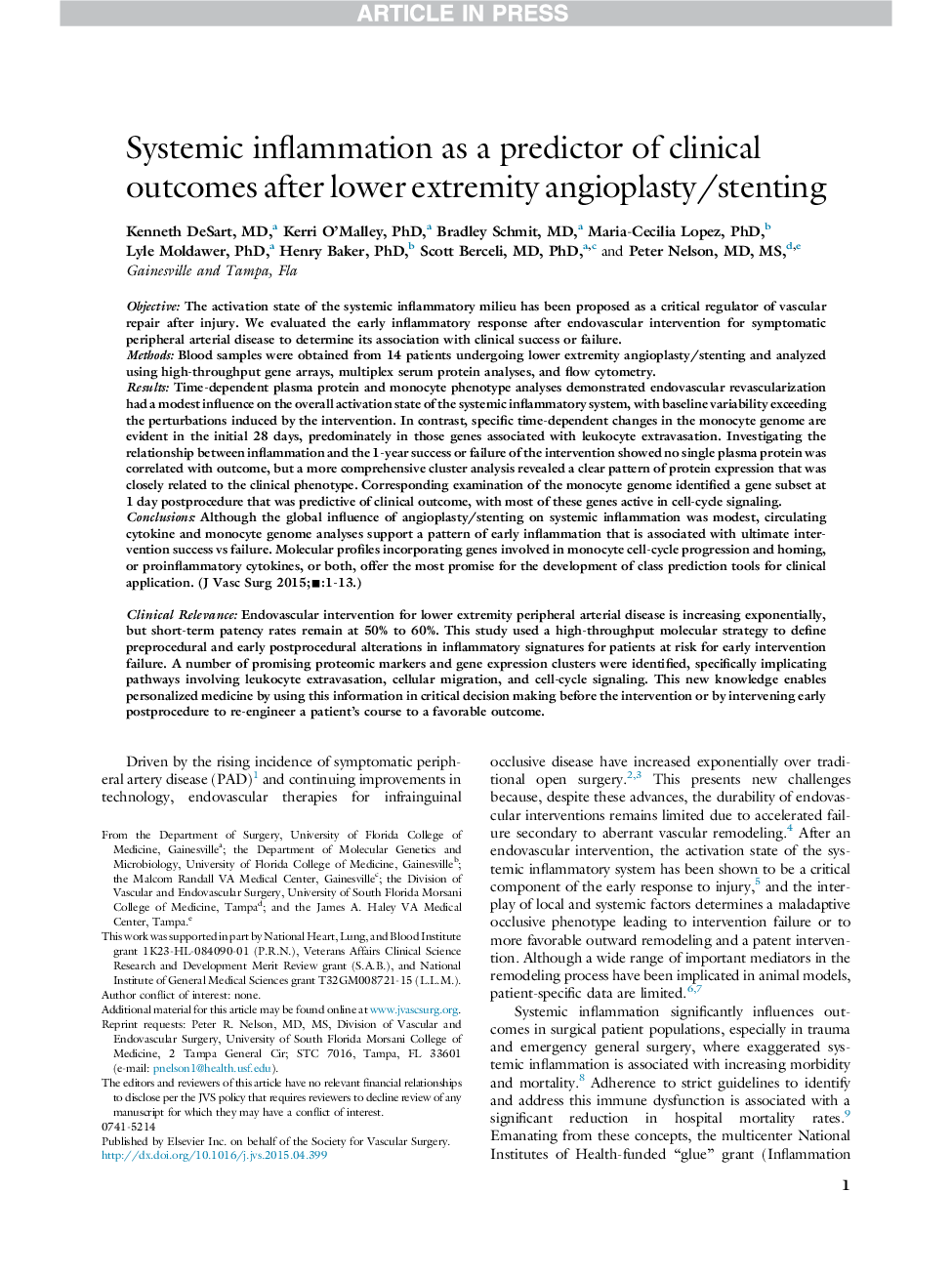| Article ID | Journal | Published Year | Pages | File Type |
|---|---|---|---|---|
| 5618198 | Journal of Vascular Surgery | 2016 | 18 Pages |
Abstract
Endovascular intervention for lower extremity peripheral arterial disease is increasing exponentially, but short-term patency rates remain at 50% to 60%. This study used a high-throughput molecular strategy to define preprocedural and early postprocedural alterations in inflammatory signatures for patients at risk for early intervention failure. A number of promising proteomic markers and gene expression clusters were identified, specifically implicating pathways involving leukocyte extravasation, cellular migration, and cell-cycle signaling. This new knowledge enables personalized medicine by using this information in critical decision making before the intervention or by intervening early postprocedure to re-engineer a patient's course to a favorable outcome.
Related Topics
Health Sciences
Medicine and Dentistry
Cardiology and Cardiovascular Medicine
Authors
Kenneth MD, Kerri PhD, Bradley MD, Maria-Cecilia PhD, Lyle PhD, Henry PhD, Scott MD, PhD, Peter MD, MS,
